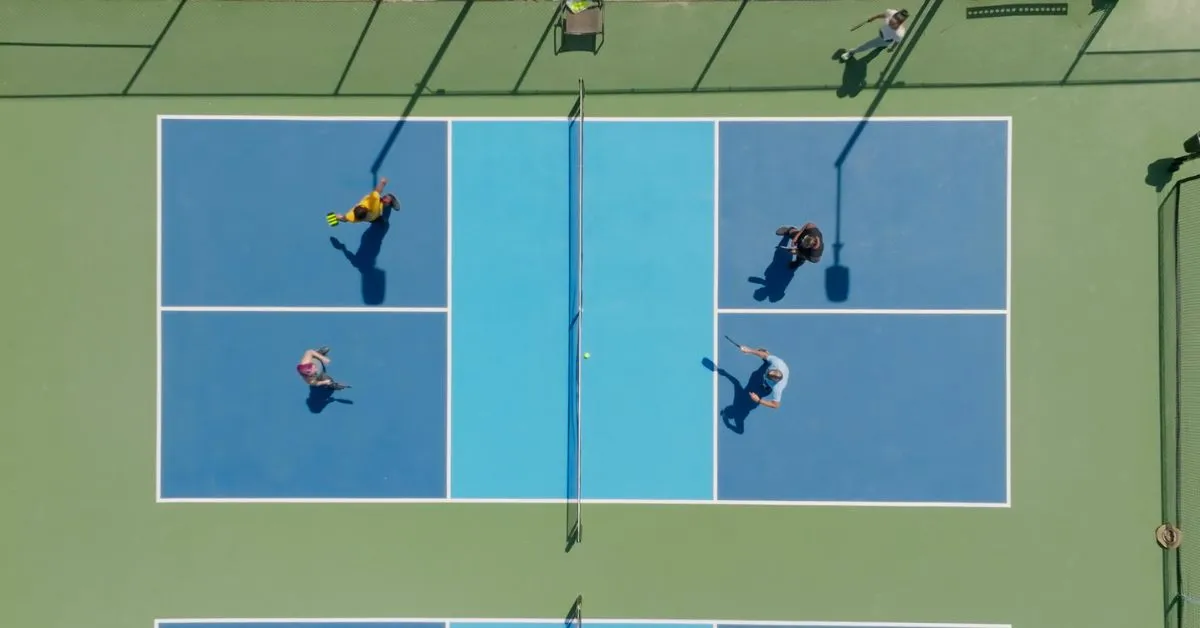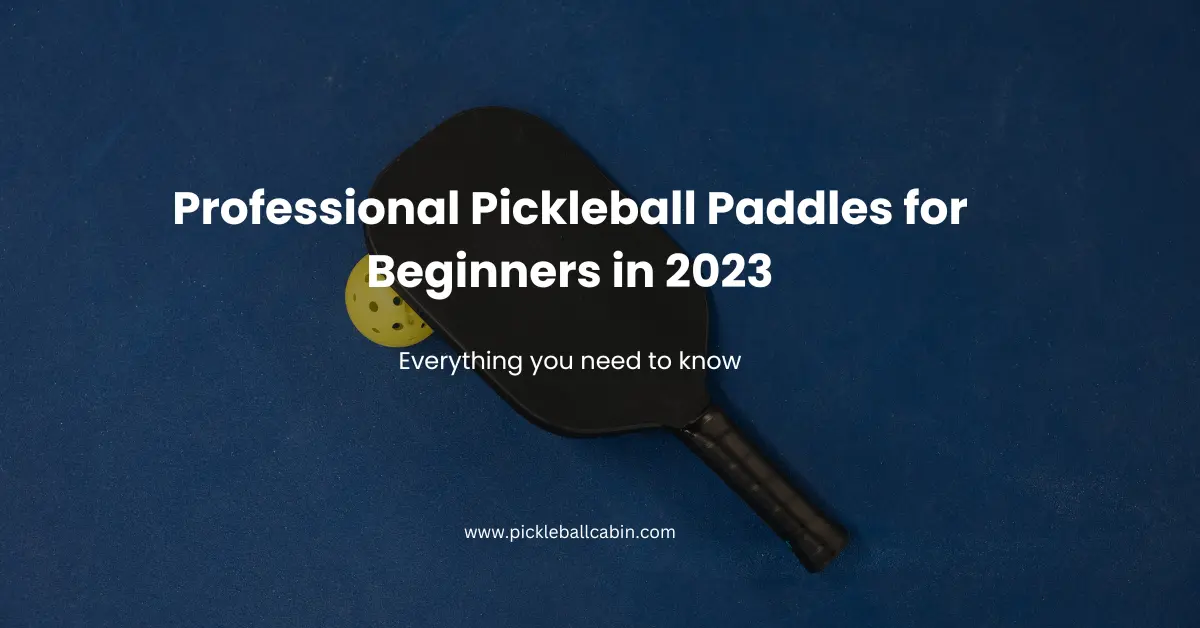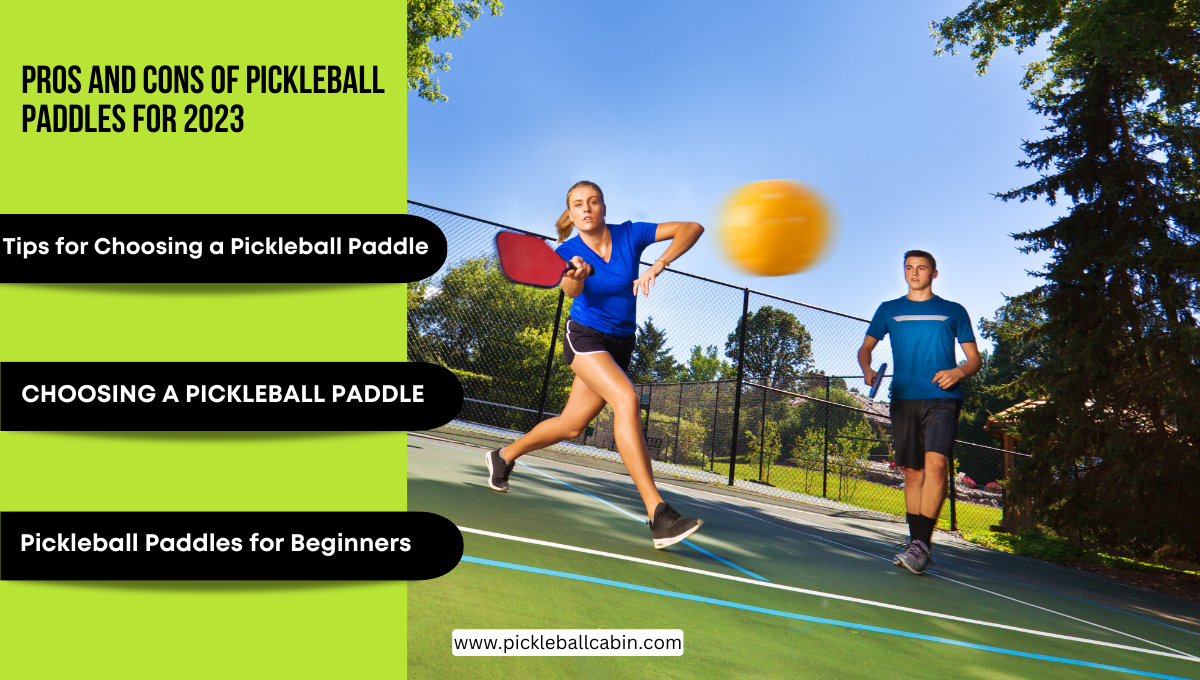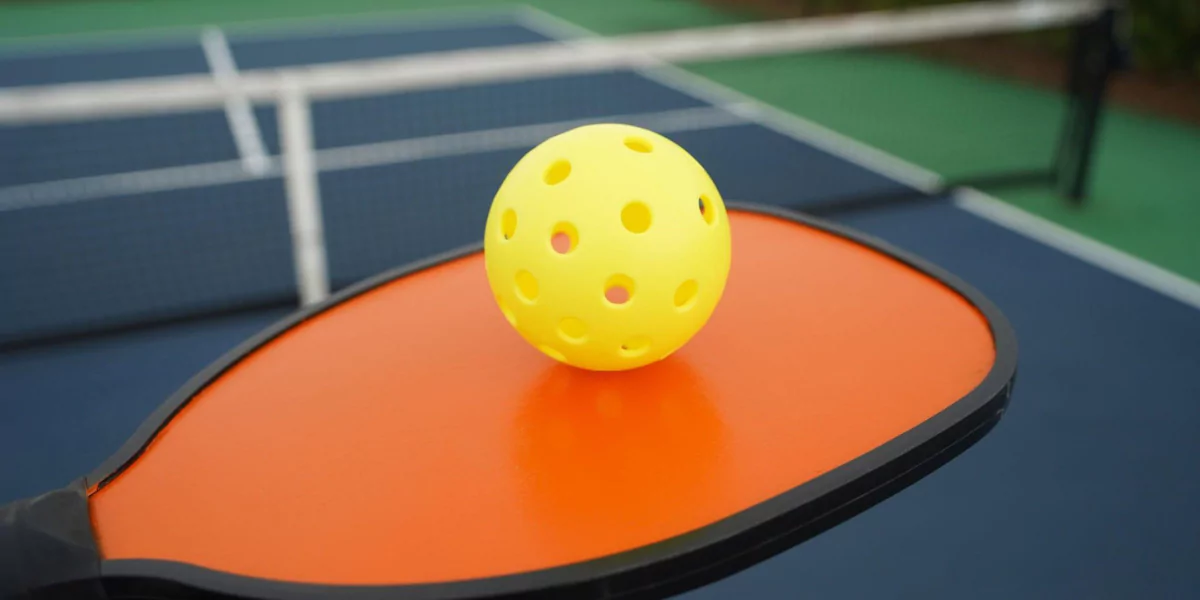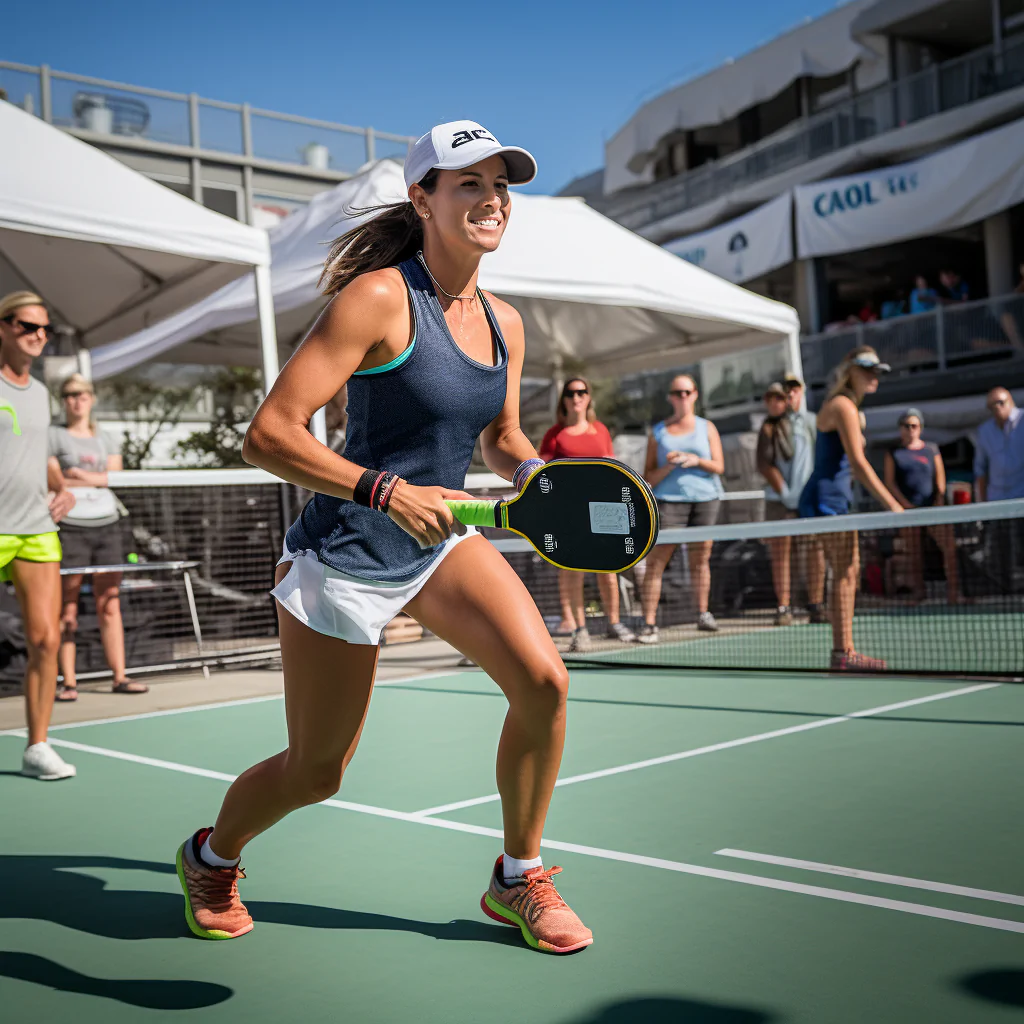If you love playing pickleball and want to get better at it, there’s a simple trick you can try – using a weighted pickleball paddle! By adding some extra weight to your paddle, you can improve your skills and have more fun on the court. Whether you’re a beginner or a seasoned player, using a weighted paddle can help you hit the ball with more power and control.
In this article, we’ll explore how a weighted pickleball paddle can enhance your game and give you an edge over your opponents. So get ready to enhance your skills and become a pickleball pro!
Understanding Pickleball Paddles
What is a Pickleball Paddle?
A pickleball paddle is an essential piece of equipment used in the game of pickleball. It is similar to a tennis racket, but smaller in size and made specifically for pickleball. The paddle consists of a handle and a large, flat surface called the face. The face is usually made of a composite material, such as graphite or fiberglass, which provides durability and enhances performance. Pickleball paddles come in various shapes and sizes, allowing players to choose one that suits their playing style and preferences.
Types of Pickleball Paddles
There are different types of pickleball paddles available in the market. Some paddles are made of composite materials like graphite or fiberglass, while others are made of wood. Composite paddles are generally lighter and offer more power and control, making them popular among advanced players.
On the other hand, wooden paddles are heavier and provide beginners with better stability and a softer touch. Apart from the material, paddle shapes also vary, with some having a wider face for increased sweet spot and forgiveness, while others are narrower for better maneuverability. It’s important to consider your skill level, playing style, and personal preferences when choosing the right paddle for yourself.
Choosing the Right Pickleball Paddle
Choosing the right pickleball paddle is crucial to improving your game and enjoying the sport to its fullest. Some factors to consider while selecting a paddle include your skill level, style of play, grip size, and weight. Beginners might benefit from a slightly heavier paddle for better stability and control, while advanced players typically prefer lighter paddles for increased maneuverability and power. Testing out different paddles or seeking advice from experienced players can help you decide which paddle is best suited for your needs.
The Concept of Weight in Pickleball Paddles
Understanding Weight in Pickleball Paddles
Weight plays a significant role in the performance of a pickleball paddle. It refers to the total mass or heaviness of the paddle and is usually measured in ounces. The weight of a paddle can affect how it feels in your hand, how much power you can generate, and how accurately you can control the ball. Lighter paddles are generally easier to swing quickly and maneuver, while heavier paddles provide more stability and allow for stronger shots. It’s important to find the right balance that suits your playing style and comfort level.
How Weight Affects Performance
The weight of a pickleball paddle directly influences your performance on the court. A lighter paddle allows for increased swinging speed, making it easier to generate power and go for quick shots. This can be beneficial for players who prefer a more aggressive style of play and rely on fast-paced shots. On the other hand, a heavier paddle provides better stability and control, allowing for improved accuracy and placement of shots. Players who value consistency and precision might find a heavier paddle more suitable for their needs.
Optimal Weight Range for a Pickleball Paddle
The optimal weight range for a pickleball paddle depends on various factors, including your physical strength, playing style, and personal preference. As a general guideline, most pickleball paddles range from 6 to 14 ounces in weight. Beginners and players who prioritize control and stability may find paddles in the higher weight range (9 to 14 ounces) more suitable.
Advanced players who focus on power and maneuverability may prefer paddles in the lower weight range (6 to 8 ounces). It’s important to try out different weights and assess how they feel in your hand before settling on the optimal weight for your paddle.
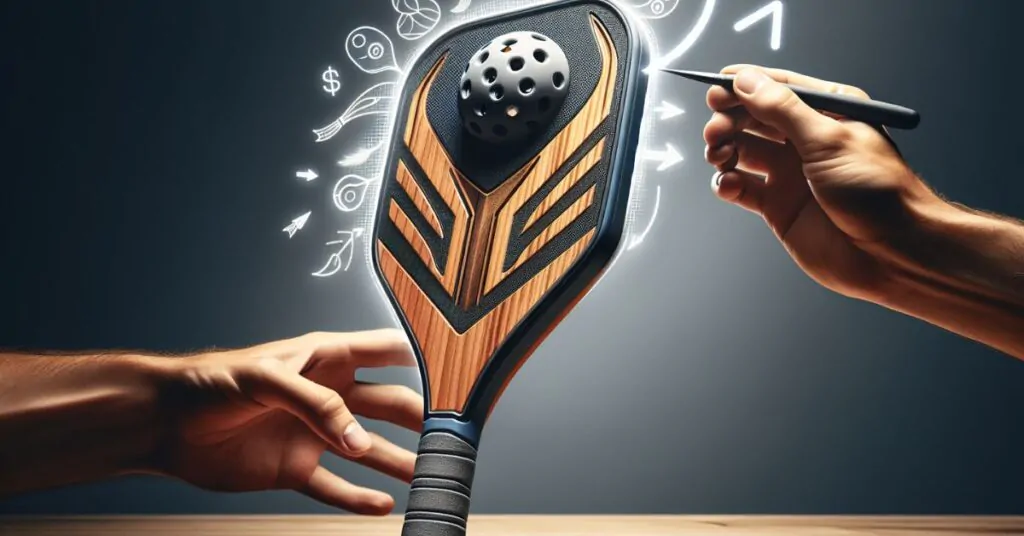
Benefits of a Weighted Pickleball Paddle
Increased Power
Using a weighted pickleball paddle can significantly increase the power behind your shots. The additional weight allows you to generate more momentum and transfer it to the ball, resulting in stronger hits. This can be particularly advantageous in situations where you need to hit the ball harder or get it past your opponent quickly. The added power can give you an edge during competitive matches and help you win critical points.
Improved Control and Stability
A weighted paddle offers better control and stability during your shots. The added weight helps dampen vibrations and reduces the risk of mishits, allowing for more accurate and consistent ball placement. This increased stability can be beneficial when executing finesse shots like drops or dinks, as well as when returning powerful shots from your opponents. The improved control and stability provided by a weighted paddle can help elevate your game and give you greater confidence on the court.
Enhanced Momentum
The weight of a pickleball paddle allows you to generate more momentum when swinging, resulting in increased overall speed and power. This can make your shots more difficult for your opponents to return, giving you a competitive advantage. The enhanced momentum created by a weighted paddle can be especially useful when playing against skilled opponents who can quickly react to lighter shots. By adding momentum to your shots, you can keep your opponents on their toes and make it more challenging for them to counter your moves.
Downsides of a Weighted Pickleball Paddle
Potential for Fatigue
Using a weighted paddle can potentially lead to increased fatigue during long matches or extended playing sessions. The additional weight can put extra strain on your arm and shoulder muscles, resulting in quicker tiredness. It’s important to gradually build up your strength and conditioning when transitioning to a weighted paddle to avoid overexertion. Regular rest and recovery, as well as strength training exercises, can help minimize the risk of fatigue and injury.
Increased Risk of Injury
The added weight of a pickleball paddle can increase the risk of certain injuries, especially if proper technique and form are not maintained. The added strain on your muscles and joints can lead to overuse injuries such as tendonitis or muscle strains. It’s crucial to maintain good body mechanics, strengthen the relevant muscle groups, and listen to your body’s signals to prevent injuries. Additionally, consulting with a coach or sports professional can help ensure that you are using the weighted paddle correctly and minimizing the risk of injury.
Reduction in Speed and Flexibility
While a weighted paddle offers benefits in terms of power and stability, it may also result in a slight reduction in speed and maneuverability. The extra weight can make it harder to swing the paddle quickly, resulting in slower reaction times and potentially impacting your ability to reach certain shots. Additionally, the added weight may limit the flexibility of the paddle, making it less forgiving for off-center hits. It’s important to assess your playing style and priorities to determine whether the trade-off between power and speed is suitable for your game.
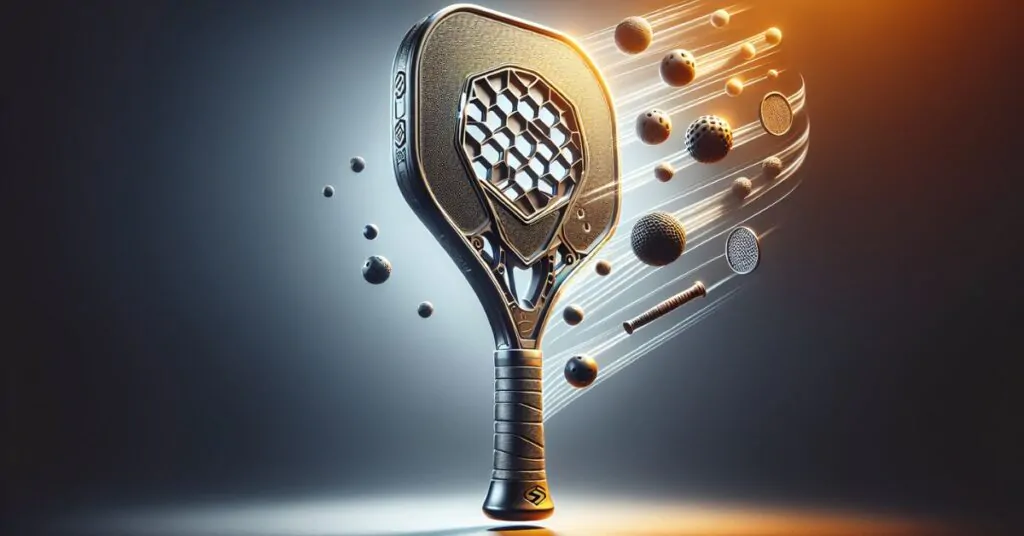
How to Add Weight to a Pickleball Paddle
Choosing the Right Materials
When considering adding weight to your pickleball paddle, it’s important to choose the right materials to ensure a balanced and sturdy modification. Common materials used to add weight include lead tape, tungsten powder, or custom-made weights specifically designed for pickleball paddles. These materials are typically safe to use and can be easily attached to the paddle without compromising its integrity or performance. It’s essential to follow the manufacturer’s instructions and guidelines when selecting and using the materials to ensure a proper and secure attachment.
Placement of Extra Weight
The placement of the extra weight on the pickleball paddle is crucial to achieve the desired effect. Adding weight closer to the handle can shift the balance point of the paddle and provide better stability.
On the other hand, adding weight towards the head of the paddle can enhance the power and momentum of your shots. It’s important to experiment with different placements to find the configuration that best suits your playing style and preferences. This may require some trial and error, but it’s worth the effort to find the optimal weight distribution for your paddle.
Procedure to Attach Weight
Attaching weight to your pickleball paddle can be done with relative ease. For materials like lead tape or custom-made weights, simply follow the manufacturer’s instructions for attachment. Ensure that the weight is securely fastened to the paddle and does not interfere with your grip or comfort while playing.
If using tungsten powder, mix it with epoxy or adhesive and carefully apply it to the desired location on the paddle. Allow sufficient time for the adhesive to dry and bond the weight to the paddle. It’s important to inspect the attachment periodically and make any necessary adjustments or replacements to maintain the weight securely.
Adapting to a Weighted Pickleball Paddle
Adjusting your Swing
Using a weighted paddle requires some adjustment to your swing and technique. The added weight can affect the timing and trajectory of your shots. To adapt, focus on generating more power and maintaining a fluid motion throughout your swing. Take the time to practice and become comfortable with the modified swing to ensure consistent and effective shots. It’s also important to pay attention to your body mechanics and ensure proper form to avoid strain or injury.
Practicing with the New Paddle
When transitioning to a weighted pickleball paddle, consistent practice is key to becoming accustomed to the changes. Spend time on the court practicing various shots, focusing on control, power, and accuracy. Gradually increase your practice time and intensity to build strength and endurance with the weighted paddle. Practicing drills, playing matches with friends or joining pickleball leagues can help you fully adapt to the new paddle and improve your overall game.
Evaluating your Performance
As you become more comfortable with the weighted paddle, regularly evaluate your performance to track improvements and potential areas of development. Pay attention to the impact of the added weight on your power, control, and overall game. Assess whether the weighted paddle is positively contributing to your game or if adjustments need to be made. Continuous evaluation and self-reflection will help you optimize your performance and make any necessary adjustments to your playing style or equipment.
Safety Considerations with Weighted Pickleball Paddles
Checking the Weight Limit
It’s important to check the weight limit regulations set by pickleball organizations before adding any weight to your paddle. Different tournaments and leagues may have specific rules and restrictions regarding paddle weight. Ensure that the total weight of your modified paddle falls within the allowed limits to avoid disqualification or penalties during official competitions. Being aware of and adhering to weight limits will ensure fair play and prevent any unintentional rule violations.
Preventing Injuries
Using a weighted paddle can increase the risk of certain injuries if proper precautions are not taken. Stay mindful of your body’s limits and avoid overexertion. Warm up properly before playing to prepare your muscles and joints for the added strain. Incorporating strength and conditioning exercises as part of your regular routine can help minimize the risk of injury.
If you experience any persistent pain or discomfort while using a weighted paddle, it’s important to seek medical attention and consult with a healthcare professional to properly address and prevent any potential injuries.
Taking Breaks and Suitability
Using a weighted paddle can be physically demanding, so it’s important to take regular breaks during play to allow your muscles to rest and recover. Overusing a weighted paddle without giving your body sufficient time to recuperate can increase the risk of strain or fatigue-related injuries.
Additionally, while a weighted paddle can offer benefits to some players, it may not be suitable for everyone. Assess your physical capabilities, consult with a coach or sports professional, and listen to your body to determine whether a weighted paddle is suitable for you.
Preserving Your Weighted Pickleball Paddle
Proper Storage and Care
To preserve the integrity and performance of your weighted pickleball paddle, proper storage and care are essential. Protect the paddle from extreme temperatures and humidity by storing it in a cool, dry place, away from direct sunlight.
Avoid leaving your paddle in a hot car or exposed to harsh weather conditions. Additionally, wipe down the paddle after each use to remove dirt or moisture that may affect its performance. Regularly inspect the weight attachment to ensure it is secure and not affecting the overall condition of the paddle.
Routine Maintenance Checks
Perform routine maintenance checks on your weighted pickleball paddle to identify any potential issues that may affect its performance. Check the weight attachments for any signs of wear or loosening and address them promptly. Inspect the paddle face for any cracks or damage and replace or repair as necessary.
Regularly check the grip for wear or slippage and consider replacing it to maintain a comfortable and secure hold. By staying proactive with maintenance, you can prolong the lifespan of your weighted paddle and ensure optimal performance.
Replacing Worn Out Parts
Over time, certain parts of your weighted pickleball paddle may start to wear out or deteriorate, affecting its performance. It’s important to promptly replace any worn-out parts to maintain the integrity and functionality of the paddle. If the weight attachment starts to come loose or shows signs of damage, replace it with a new weight attachment that meets the necessary specifications.
If the grip becomes worn or loses its tackiness, consider replacing it with a new grip that ensures a comfortable and secure hold. By regularly assessing and replacing worn-out parts, you can keep your weighted paddle in top condition and enjoy its benefits for an extended period.
Buying Vs Making a Weighted Pickleball Paddle
Cost and Availability
When deciding between buying a weighted pickleball paddle or making one yourself, cost and availability can be significant factors to consider. Buying a weighted paddle from a reputable manufacturer ensures that you are getting a professionally designed and tested product. However, these paddles may be more expensive compared to a standard pickleball paddle.
On the other hand, making your own weighted paddle can be a cost-effective option, especially if you already have a suitable paddle and can acquire the necessary weights at a lower cost. It’s important to weigh the pros and cons, research various brands and options, and determine what best fits your budget and preferences.
Skill and Time Required
Creating a weighted pickleball paddle requires a certain level of skill and time commitment. If you are confident in your ability to correctly add weights and secure them to the paddle without compromising its integrity, making your own paddle can be a rewarding DIY project.
However, if you are unsure or inexperienced, it may be safer and more efficient to purchase a pre-weighted paddle. Consider your expertise, available time, and willingness to undertake the task when deciding whether to buy or make a weighted pickleball paddle.
Quality and Performance
The quality and performance of a pre-weighted pickleball paddle from a reputable manufacturer are generally guaranteed. These paddles are designed and tested to meet the needs of players at various skill levels and ensure optimal performance on the court. However, making your own weighted paddle may carry a higher risk of inconsistencies in weight distribution or attachment, potentially impacting its performance.
If you prioritize top-quality construction and performance, purchasing a pre-weighted paddle may be the more reliable option. However, with proper research, preparation, and attention to detail, a self-made weighted paddle can still provide satisfactory performance.
Case Studies on Weighted Pickleball Paddles
Professionals Using Weighted Paddles
Several professional pickleball players have chosen to use weighted paddles to enhance their game. These players recognize the benefits that a weighted paddle can provide in terms of power, control, and stability. By using a weighted paddle, professionals can maximize their performance and gain an edge over their opponents. Studying and observing the techniques and strategies employed by professional players using weighted paddles can provide valuable insights and inspiration for improving your own game.
Experimental Data supporting Weighted Paddles
Experimental data and research have shown positive results regarding the benefits of using weighted pickleball paddles. Studies have indicated that adding weight to a paddle can improve ball speed, power, and accuracy. These findings support the notion that a weighted paddle can enhance a player’s performance and contribute to their success on the court. By incorporating the findings of these experiments into your own playing style, you can potentially experience similar benefits and improve your overall game.
Feedback and Reviews from General Users
General users of weighted pickleball paddles have provided valuable feedback and reviews regarding their experience with these paddles. Many users report increased power, control, and stability when using a weighted paddle. They also appreciate the ability to generate more speed and momentum, allowing them to execute shots that were previously difficult. However, it is important to note that individual experiences may vary, and not all users may find a weighted paddle suitable for their game. Reading and considering the feedback and reviews of fellow players can help you make an informed decision about whether a weighted paddle is right for you.
In conclusion, understanding pickleball paddles and the concept of weight can greatly enhance your performance in the sport. The decision to use a weighted paddle comes with benefits such as increased power, improved control, and enhanced momentum.
However, it is essential to evaluate the potential downsides, including the risk of fatigue and injury, as well as a potential reduction in speed and flexibility. Adding weight to a pickleball paddle requires careful consideration of materials, placement, and attachment procedures.
Adapting to a weighted paddle requires adjustments in swing, regular practice, and performance evaluation. Safety considerations, including adhering to weight limits, preventing injuries, and taking breaks, must be a priority.
Proper storage, maintenance, and replacing worn-out parts are crucial for preserving your weighted paddle. Deciding between buying and making a weighted paddle should consider cost, skill, time required, quality, and performance.
Case studies, experimental data, and feedback from professionals and general users can provide valuable insights for your own journey in using a weighted pickleball paddle. Overall, enhancing your game with a well-chosen and properly used weighted paddle can bring significant improvements and enjoyment to your pickleball experience.

